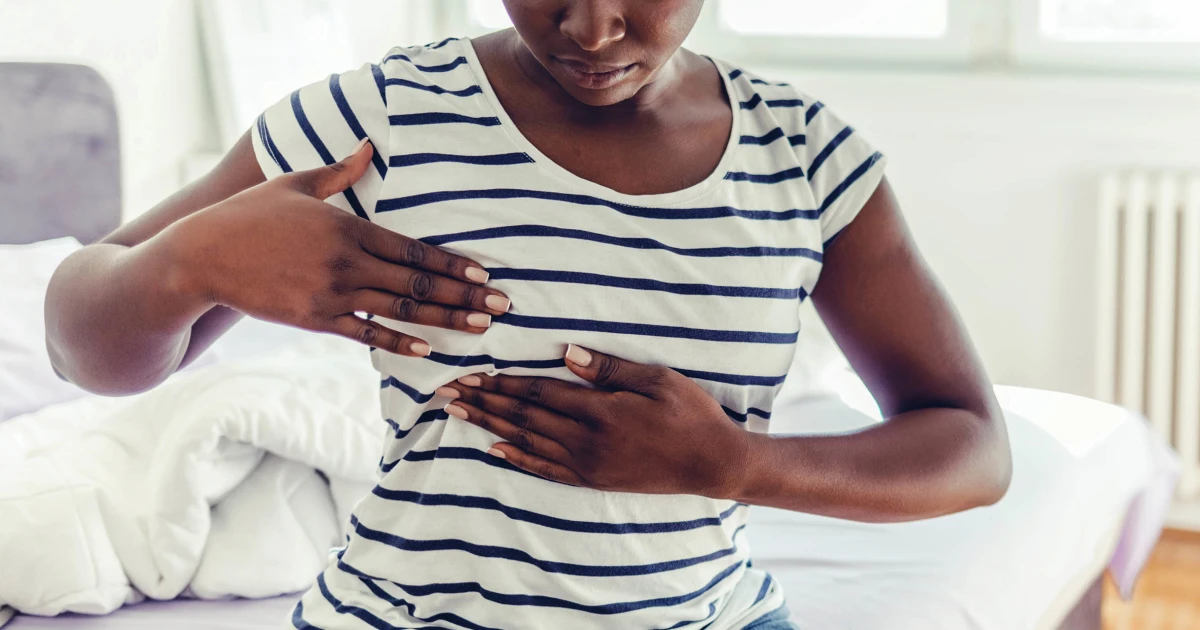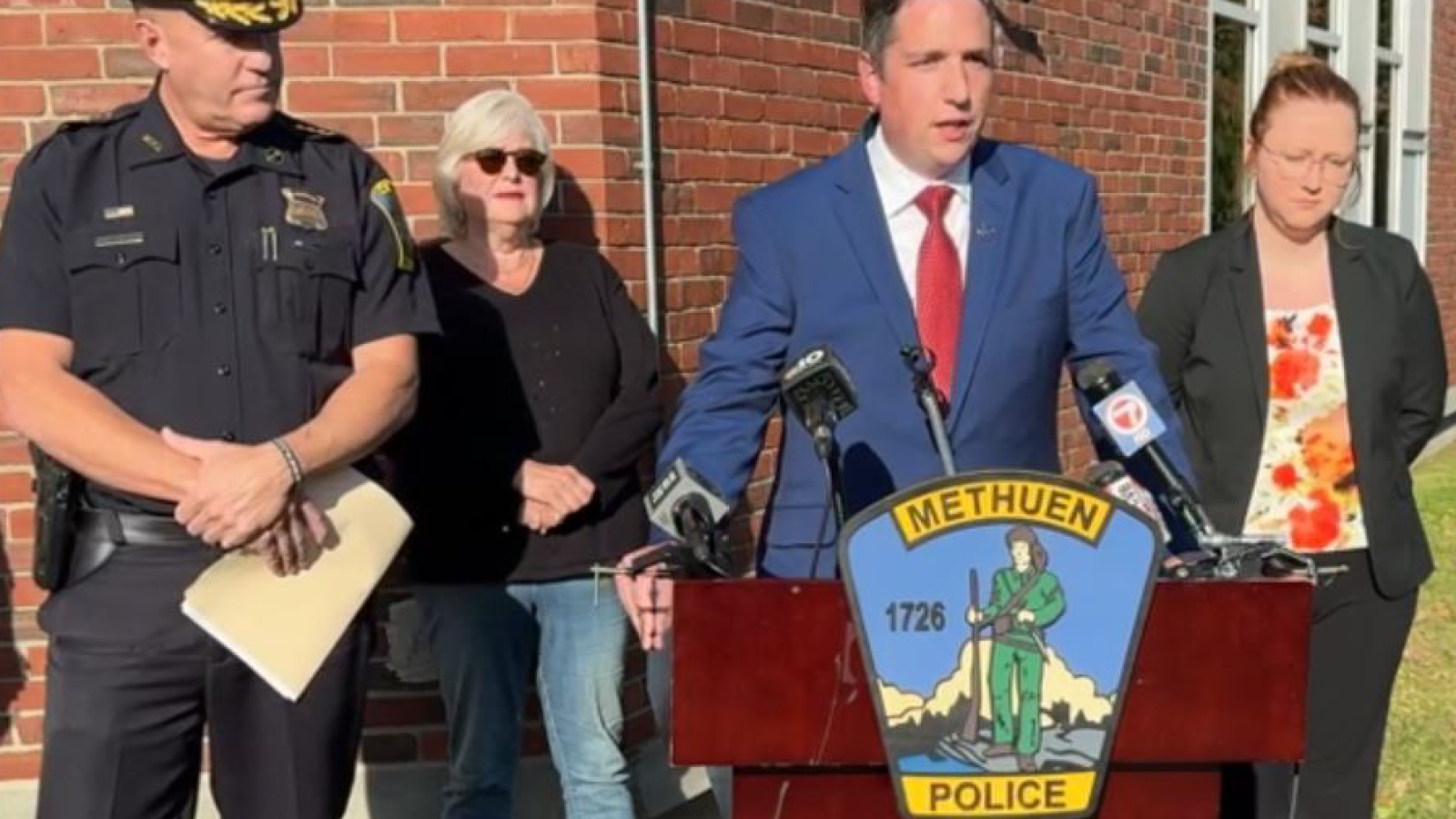
Dr. Toma Omofoye says she focuses on being the “best early detector” of breast cancer she can be.
As a breast imaging radiologist at the University of Texas MD Anderson Cancer Center in Houston, she interprets patients’ mammograms, ultrasounds and MRI scans to try to find the disease as early as possible. She also performs image-guided biopsies.
“Early detection of breast cancer is truly a gift that we can give to women, and it increases that survival,” Omofoye tells TODAY.com.
“I never want to be in a situation where I have to give that woman the bad news, but when we do, I’m grateful when I can say, ‘But thankfully, this has been caught very, very early.’”
Breast cancer is on the doctor’s mind for herself as well. She’s 41, an age when women at average risk can start getting a regular mammogram, the U.S. Preventive Services Task Force recommends.
Omofoye doesn’t have a family history of breast cancer, but as a Black woman, she statistically has a 38% higher risk of dying from breast cancer compared to white women, according to the American Cancer Society.
“As a physician, I know what the screening technology is. I understand the statistics. I also have normal anxiety about my health. So I also experience the moment of anticipation when I’m waiting for my results,” Omofoye says.
“I focus on controlling what I can. I make the effort to have a healthy diet, to exercise, to limit alcohol, even to remind myself that undergoing screening is part of how I’m taking charge of my health.”
Given what she knows, how does Omofoye monitor herself for the disease?
The first step is breast awareness — recognizing what’s normal for her and noticing any changes, she says. Omofoye looks at her torso every day as she’s getting out of the shower.
Here are breast cancer symptoms the doctor pays attention to in her own body:
Lumps
The most common breast cancer symptom is a painless lump in the breast or underarm area, Omofoye says. It’s often hard and can feel like a ridge, a swelling or a thickening — just different from the surrounding tissue, she adds.
“For many parts of our body, we wait for signs of pain and discomfort to really trigger us to do something about it,” the doctor notes.
“But often when breast cancer starts out, it actually doesn’t have pain. It frequently starts out as painless. Over time, it may eventually become painful, but it’s important to act on it, even if it’s a painless lump.”
The American Cancer Society no longer recommends regular self-exams or clinical breast exams, noting there’s “very little evidence” they offer a benefit for women at average risk. But women should be familiar with how their breasts normally look and feel, it urges.
“The changes that you notice organically are more likely to be significant,” Omofoye says.
Nipple Changes
About 1 in 6 women have symptoms other than a breast lump, with nipple abnormalities the second most common breast cancer warning sign, studies have found.
“Now we’ll see women come in, I think they’re more sensitive to changes around the nipple,” Omofoye says.
That includes nipple discharge, especially if it’s bloody or is coming from just one breast, she notes. The doctor watches for any spontaneous discharge — meaning it happens on its own, not when the nipple is squeezed — that’s visible in the bra or might even leak through a shirt.
Nipple inversion — when the nipple retracts and is pulled in or changes direction — is another symptom she scans for.
Scaling of the skin around the nipple area that might look like an eczema rash and doesn’t resolve after applying lotion also warrants checking out, she says. It could be a symptom of Paget disease of the breast, a rare type of breast cancer.
Changes in Breast Size or Shape
Omofoye checks if one breast is becoming larger compared to the other, or if it’s shrinking.
Breast swelling can be caused by inflammatory breast cancer, a rare and aggressive type of the disease, the National Cancer Institute notes.
Breast shrinking can happen because rather than forming a lump, some cancers grow in a line that can pull into itself and shrink the breast in the process. “It’s not as common a sign, but it is an important sign,” Omofoye says.
Changes in Breast Skin
The doctor looks for skin changes, like dimpling or puckering of the skin.
Skin that appears pitted, like the skin of an orange, and has pink, red or dark colored areas can be a sign of inflammatory breast cancer, according to MD Anderson.
A dent in the breast also warrants attention.
How to Get Help If You Have Breast Cancer Symptoms
If you have any warning signs that persist, don’t wait to schedule a screening mammogram that happens once a year.
Share your symptoms right away with your doctor, who can request a diagnostic mammogram and additional methods of getting checked during the same visit, like a breast ultrasound, Omofoye says.
What Screening Is Best for Dense Breasts?
Mammography can detect the vast majority of breast cancers, but dense breast tissue appears white on the X-ray, just like cancer does, so it can mask a tumor, Omofoye notes.
About 40% of women have dense breasts — a normal finding that will be included on their mammogram report — and doctors will often recommend supplemental screening for them such as a breast ultrasound or MRI, she adds.
Omofoye encourages women to take an online breast cancer risk assessment tool such as the Gail Model or the Tyrer-Cuzick Model and review them with their doctor.
If you’re at above average risk, it may be appropriate to add a breast MRI or ultrasound to your mammogram each year, she says.



